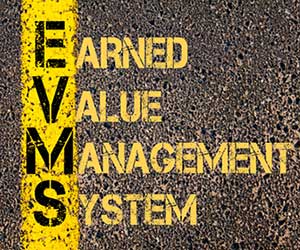
In project management, getting an early indication of problems is the silver bullet that allows the project manager to correct the problems before they start.
The Schedule Performance Index, usually abbreviated as SPI, is one of the fundamental outputs of the Earned Value Management System. It tells the project manager how far ahead or behind the project is at the point of analysis (usually right now).
Formula
Where:
- SPI = Schedule Performance Index
- EV = Earned Value (dollars, euros, etc.)
- PV = Planned Value (dollars, euros, etc.)
Interpretation of Results
- If SPI is less than 1, the task is behind schedule.
- If SPI is 1, the task is on schedule
- If SPI is greater than 1, the task is ahead of schedule.
For example,
- SPI = 0 means the project work has not started.
- SPI = 0.5 means the project has performed half the work it was supposed to at this point.
- SPI = 1.0 means the project is on schedule.
- SPI = 2.0 means the project has performed twice the work it was supposed to at this point.
Background
The Schedule Performance Index represents the relative amount that the task is behind or ahead of schedule. For example, the task Build Fence has a budget of $4,000. and the schedule performance index is 1.25. This would represent a task that is 25% ahead of schedule.
The underlying Planned Value (PV) and Earned Value (EV) must be calculated on a task by task basis and summed to determine the overall project’s SPI.
It must have a time point of reference, in other words, it is a “snapshot” at a certain point in time. If the project is being worked on, the schedule performance index is always changing. To put it another way, the project is getting more ahead or behind schedule as time goes on and as work goes on.
Related Earned Value Metrics
The Schedule Performance Index should be analyzed in conjunction with the Cost Performance Index (CPI), which tells you how far over or under budget the project is.
- SPI and CPI are both greater than 1.0: The project is ahead of schedule and under budget (hooray!)
- SPI is greater than 1.0 and CPI is less than 1.0: The project is ahead of schedule but over budget. In other words, more tasks have been performed than were scheduled at this point, but the tasks that have been performed are over budget.
- SPI is less than 1.0 and CPI is greater than 1.0: The project is under budget but behind schedule. In other words, less tasks have been performed than were scheduled at this point, but the tasks that have been performed are under budget.
- SPI and CPI are both less than 1.0: The project is behind schedule and over budget (boo!)
The Schedule Variance (SV) is similar to SPI but tells you the absolute, rather than relative, amount the project is ahead or behind schedule.
Schedule Baseline
In order to calculate the schedule performance index, the project must initially be divided into tasks and each task must be assigned the following data:
- Start and Finish Dates
- Budget
This is called the schedule baseline, and it gives the project manager something to track against. Project scheduling is one of the fundamental aspects of project management.
Planned Value (PV)
Also known as Budgeted Cost of Work Scheduled (BCWS), Planned Value is the amount of the task that is supposed to have been completed, in terms of the task budget. It is calculated from the project budget.
For example, if it’s Feb. 15 today, and the task is supposed to last from Feb. 10 to Feb. 20, it should be 50% complete. If the task budget is $4,000, PV = 50% x $4,000 = $2,000.
Earned Value (EV)
Also known as Budgeted Cost of Work Performed (BCWP), Earned Value is the amount of the task that is actually completed. It is also calculated from the project budget.
For example, if the actual percent complete is 75% and the task budget is $4,000, EV = 75% x $4,000 = $3,000.
Example
Let’s say we have a project with two tasks, building a fence and laying sod. The initial schedule baseline is:
| ID | Task | Start date | End Date | Budget |
|---|---|---|---|---|
| 100 | Build Fence | Feb. 10 | Feb. 20 | $4,000 |
| 200 | Lay Sod | Feb. 12 | Feb. 25 | $3,000 |
| TOTAL | $7,000 | |||
Let’s say it’s Feb. 15. Determine the Schedule Performance Index for the project.
Step 1: Determine the percent complete for each task. Since this is not a real project we will assume the tasks are 75% and 10% complete, respectively.
| ID | Task | Start date | End Date | Budget | % Complete |
|---|---|---|---|---|---|
| 100 | Build Fence | Feb. 10 | Feb. 20 | $4,000 | 75% |
| 200 | Lay Sod | Feb. 12 | Feb. 25 | $3,000 | 10% |
| TOTAL | $7,000 | ||||
Step 2: Determine Planned Value (PV).
Task 100 should be 50% complete, given the start and end dates of Feb. 10 and Feb. 20, respectively. Therefore PV = 50% x $4,000 = $2,000.
Task 200 should be 3 out of 13 days complete, which is 23%. Therefore, PV = 23% x $3,000 = $690.
| ID | Task | Start date | End Date | Budget | % Complete | PV |
|---|---|---|---|---|---|---|
| 100 | Build Fence | Feb. 10 | Feb. 20 | $4,000 | 75% | $2,000 |
| 200 | Lay Sod | Feb. 12 | Feb. 25 | $3,000 | 10% | $690 |
| TOTAL | $7,000 | |||||
Step 3: Determine Earned Value (EV)
Task 100 is actually 75% complete, therefore EV = 75% x $4,000 = $3,000.
Task 200 is actually 10% complete, therefore EV = 10% x $3,000 = $300.
| ID | Task | Start date | End Date | Budget | % Complete | PV | EV |
|---|---|---|---|---|---|---|---|
| 100 | Build Fence | Feb. 10 | Feb. 20 | $4,000 | 75% | $2,000 | $3,000 |
| 200 | Lay Sod | Feb. 12 | Feb. 25 | $3,000 | 10% | $690 | $300 |
| TOTAL | $7,000 | ||||||
Step 4: Determine Schedule Performance Index (SPI)
SPI = EV / PV.
| ID | Task | Start date | End Date | Budget | % Complete | PV | EV | SPI |
|---|---|---|---|---|---|---|---|---|
| 100 | Build Fence | Feb. 10 | Feb. 20 | $4,000 | 75% | $2,000 | $3,000 | 1.25 |
| 200 | Lay Sod | Feb. 12 | Feb. 25 | $3,000 | 10% | $690 | $300 | 0.43 |
| TOTAL | $7,000 | $2,690 | $3,300 | 1.23 | ||||
The overall project schedule performance index is 1.23, which means that 23% more work has been accomplished than the project plan at this point. However, task 200 has an SPI of 0.43 which means that it is significantly behind schedule.






